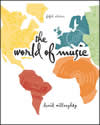Chapter11 Music of the Baroque 1600 – 1750 New instrumental and choral genres: fugue, dance suite, concerto grosso, cantata, oratorio, and opera and the music of Bach and Handel In the Baroque period, courts as well as churches were employers of musicians. City governments were becoming centers of music and culture and employers of musicians. The Protestant church not only employed musicians but added significantly to the repertoire of classical music. The Baroque period saw the beginnings of opera and the establishment of the major-minor tonal system. Composers for the first time wrote with specific tonal colors and instruments in mind, and technical skill and virtuoso performance were valued attributes. Homophonic texture became an essential ingredient in musical composition, particularly in opera, in which words could be more easily understood and dramatic action more easily advanced. With polyphonic music, words were less easily understood. Polyphonic techniques remained and were applied to instrumental and keyboard music as well as to choral composition. Much homophonic and polyphonic music was created during the Baroque. Concepts of tonality, modulation, and chord progression, as we know them today, became important through the compositional technique of continuo and figured bass (basso continuo). These concepts are frequently compared with modern jazz, particularly the bass line (walking bass), chord symbols and progressions, and harmonic improvisation by the keyboard player. The principle composers discussed are, of course, Bach and Handel, although mentioned briefly also are a number of other important composers, both men and women. Goals for Listening - Develop understanding of monophonic, polyphonic, and homophonic texture
- Develop understanding of relationship of text and music
- Develop understanding of melismatic and syllabic setting of text
- Develop understanding of phrase structure
- Develop understanding of ornamentation
- Develop understanding of antecedent and consequent phrases
- Develop understanding of motives
- Develop understanding of points of imitation
- Develop understanding of basso continuo
|



 2003 McGraw-Hill Higher Education
2003 McGraw-Hill Higher Education